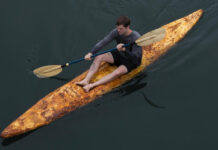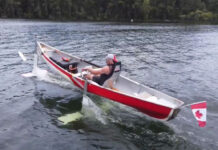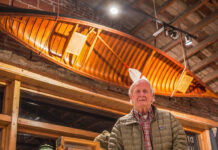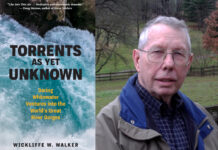It’s a cool, misty morning at the powwow grounds on Anemki Wajiw, which overlook the City of Thunder Bay on Fort William First Nation on Lake Superior’s north shore. A group of four young men and women are prepping the workspace and materials to build a birchbark canoe. They’ve already gathered the bark, spruce roots, cedar and spruce gum from the land, following traditions of their ancestors. Their work is part of a resurgence of Ojibwe culture at Fort William, but what appears to be a lesson about craftsmanship is actually about respect—for the land, culture and each other.
Birchbark dreams: Canoe building connects First Nations youth to their roots
Fort William First Nation is located just outside of Thunder Bay, Ontario, on the north shore of Lake Superior. It’s a region steeped in canoe culture lore. The area’s earliest inhabitants traveled the waterways by birchbark canoe. Thousands of years later so did the European fur traders who came seeking beaver pelts.
Nestled where the Kaministiquia River flows into Lake Superior, the area was also a voyageur mecca and host to an important fur trading post. Today Fort William Historical Park—the world’s largest reconstructed fur trading post—stands as a testament to that era.
Nowadays, there are not many birchbark canoes in the Thunder Bay area, save those used for re-enactments. This group of Fort William First Nation youth are working to change that.
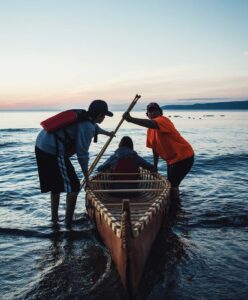
For the past two years, Gail Bannon, Fort William First Nation’s community and recreational coordinator, has lead a group of local youth in canoe building. The small team has built a 15-foot and an 18-foot birchbark canoe completely by hand. The project evolved from Bannon’s love of birch and passion for involving youth in harvesting materials to make baskets and wigwams.
“I’ve always been into watersports, so I thought ‘let’s get them into that,’” she says. “I don’t see many of the kids out there swimming in the bay or going out on boats, so I thought this would be a cool project.”
Reaching out to rediscovering traditional knowledge
In 2015, Bannon contacted Darren Lentz, a local elementary school principal with experience teaching in Indigenous communities.
“She wanted to revive Fort William’s canoe culture, and get youth out on the land engaged in cultural teachings,” says Lentz. He agreed to provide the expert skills instruction for the youth, having learned to build canoes while working at nearby Fort William Historical Park.
Eager to learn more than his coworkers could teach him, Lentz initially sought out an elder at Fort William First Nation who knew how to make snowshoes. By spending time with elders and craftspeople over several years, Lentz learned to make a variety of traditional items, including drums, sleds, tikanagans, baskets and canoes. As an educator, he is passionate about bringing these lessons into schools and to youth.
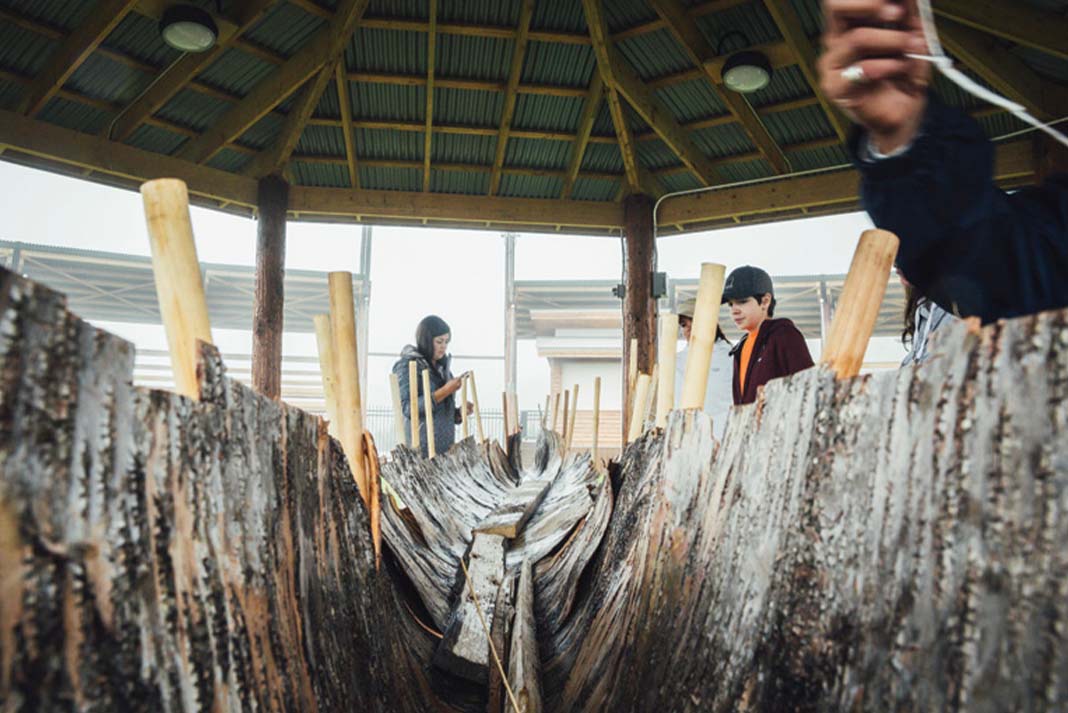
“I want students to explore and feel the connection and relationship to the land. A connection back to the land is a connection to culture, language, community and, in the end, ourselves,” Lentz says.
When Bannon started talking to Lentz about building canoes, she didn’t know of anyone in her community with that knowledge.
“I don’t know of anybody in my mother’s generation that knows how to build one. I asked myself, how could we have lost that?” she says.
Prior to this initiative, canoe building at Fort William First Nation was last done during the Great Depression of the 1930s as part of a government effort to create jobs on the reserve. However, those were cedar strip canoes built using modern tools.
Though many youth were eager to sign-up for the project, it was a small and dedicated team of five that persevered and completed the canoes, giving more than 200 hours each towards the build.
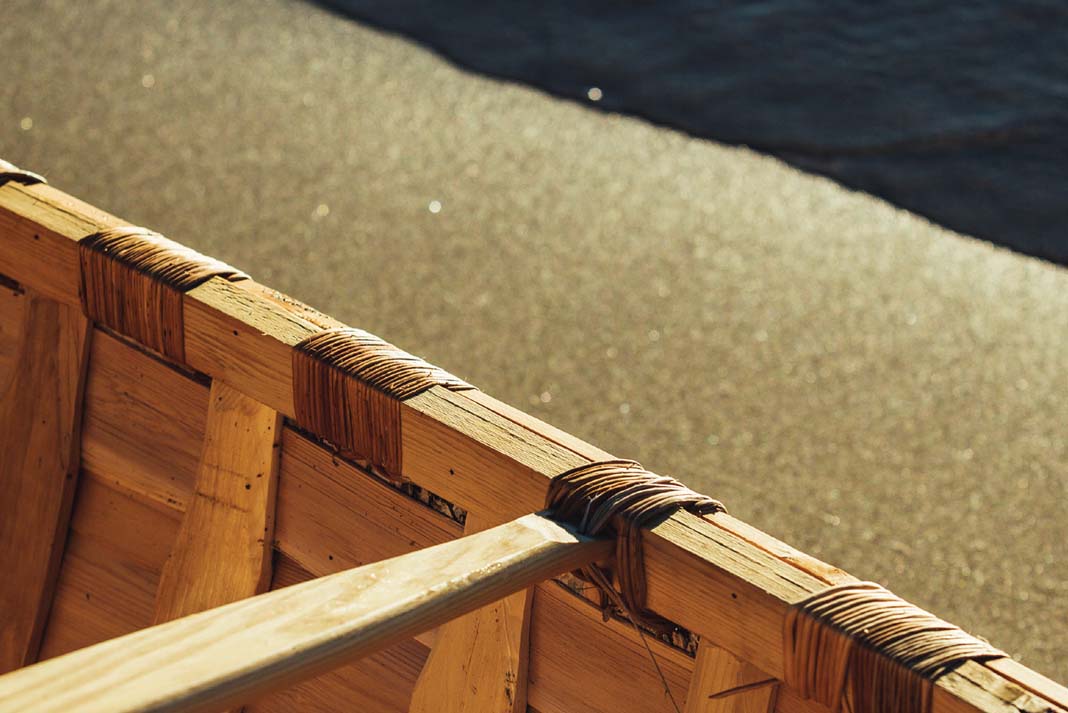
Tanya Fenton, a young mother and college student who helped supervise the group in 2016, says it was the opportunity to work outdoors as part of a team that attracted her 18-year-old daughter. Shaylah was part of the first build in 2015 and was in the unique position to share her knowledge with her mother the following year.
Teenagers turned expert canoe-builders
When I visit, the small group at Anemki Wajiw is laying out huge sheets of birchbark on a long table while spruce roots soak in a pail filled with steaming hot water. It’s an egalitarian effort with no clear leader. The youth are in constant communication. They move confidently around the table, passing tools and materials back and forth; it seems to me they’ve done this a hundred times. Conversation is punctuated with laughter as they discuss the prospect of taking the 18-foot canoe they built the previous summer out for a sunrise paddle. It’s a dreamy yet seemingly insurmountable prospect for the teenagers given their shared disdain for the dawn hour.
An integral part of any build is collecting materials from the land. Although the materials required depend on the size of the canoe, approximately six to seven square meters (60 to 80 square feet) of bark is needed. Winter bark is preferable—it is removed with the inner rind attached, whereas summer bark can be dry and prone to cracking.
More than 210 meters (700 feet) of spruce roots is needed to complete the lashings on the gunwales and stitching of the bark.
Lentz says that the time required gathering materials “depends on whether you know where to collect them and whether you have scouted spots last year.”
It’s like picking blueberries or fishing—having someone take you to their favorite honey hole is always more efficient than scouting your own.
Bannon believes showing respect for the resources is showing respect for oneself. “Knowing how the canoe comes to be forges a deeper connection to the land.” It’s a unique introduction to canoeing—collecting materials, building the canoe and then learning to paddle.
“It’s cool to learn traditional crafts and make something that can be shared with the community,” adds Shaylah. Lentz confirms her work was meticulous and her lashings “stunning.”
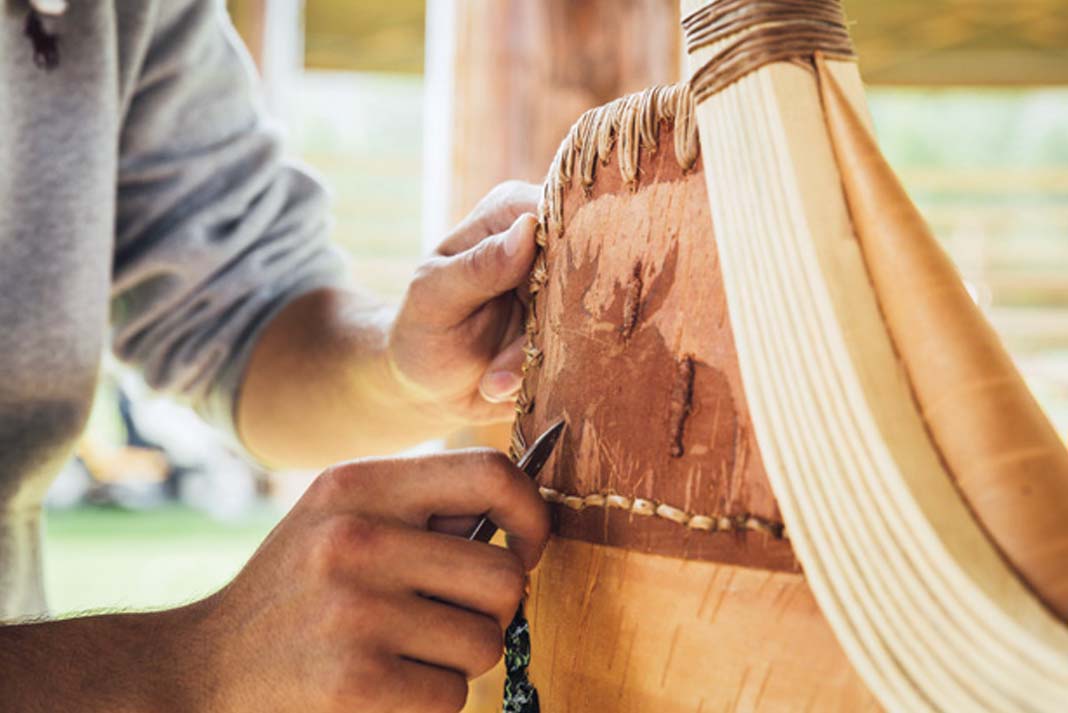
“She might never build a canoe again, but what I see in her is excellence,” Lentz says. He thinks the experience was positive for all of the youth involved, whether they only participated in the early stages or stuck it out until the canoe was completed. The project isn’t really about building a canoe. It’s about building relationships with one another, cultural traditions, and the land.
Program provides for the teachers of tomorrow
Bannon knows building a canoe is meaningful to the youth. It’s a hand-on experience and a lot of hard work—there’s no abstract learning or classroom daydreaming. “It’s a lot of touching and feeling—they get to really experience the materials,” she says.
Not even paddling their new birchbark canoe for the first time compared to the proud moment when Fort William First Nation elders visited and expressed happiness at seeing the teenagers learning a traditional craft. For the elders, it’s a sign that traditional knowledge will continue on.
“If we do this five years in a row we’ll have a few students that will know how to build a canoe from scratch on their own,” she says. “Then they’ll be able to pass on that knowledge and connections. That’s what it’s all about.”
Michelle McChristie is a freelance writer who loves writing about the people and places of Northern Ontario. She lives on the north shore of Lake Superior.
A student uses bark etching (scrafitto) to add a moose to the canoe. | Feature photo: Courtney Boyd



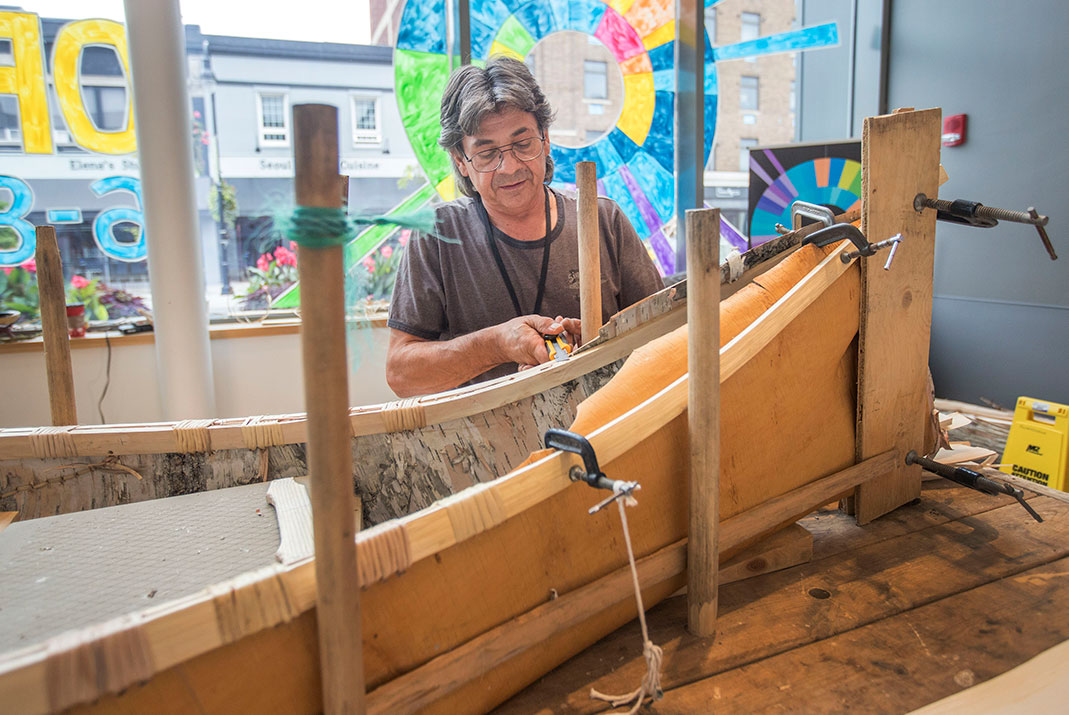

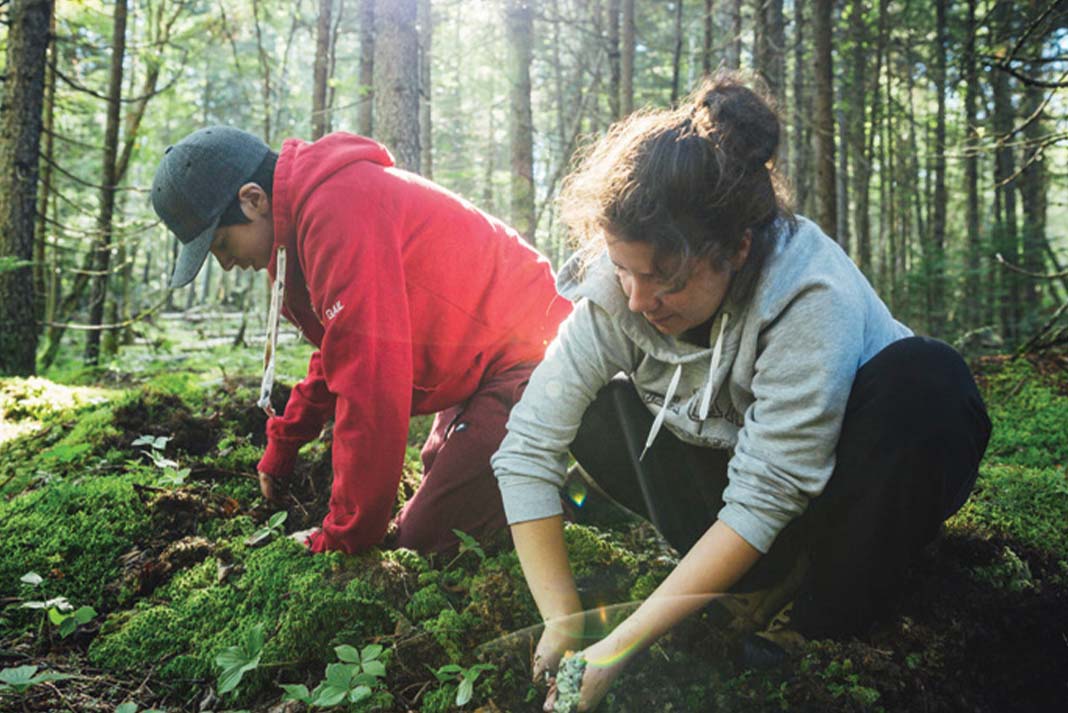
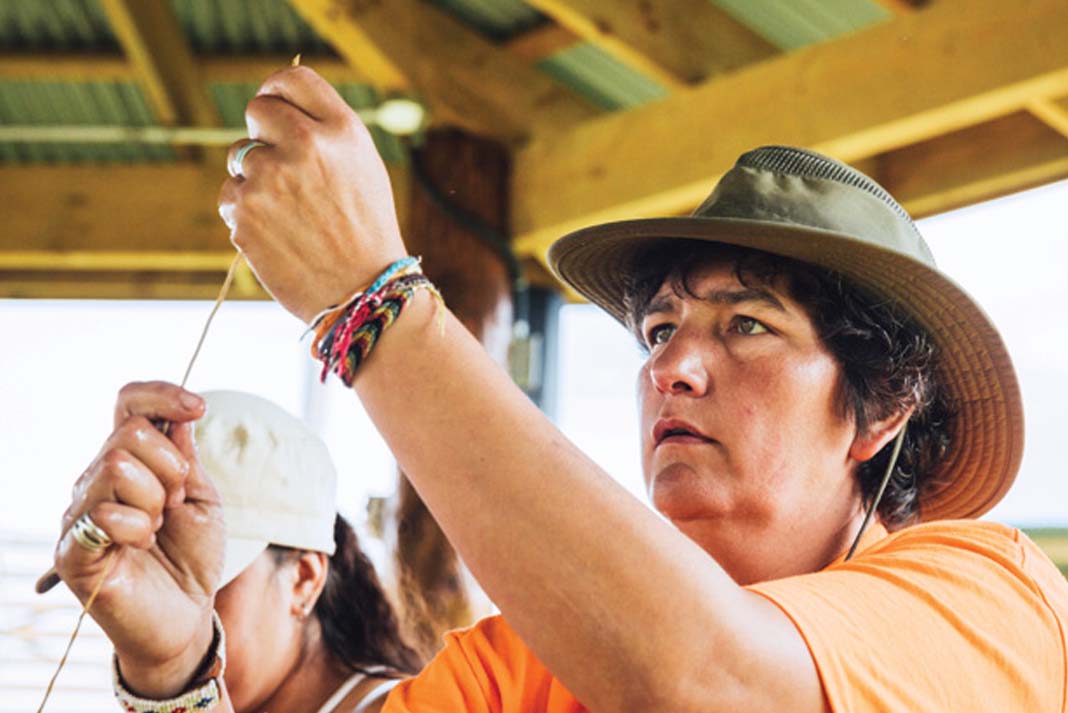
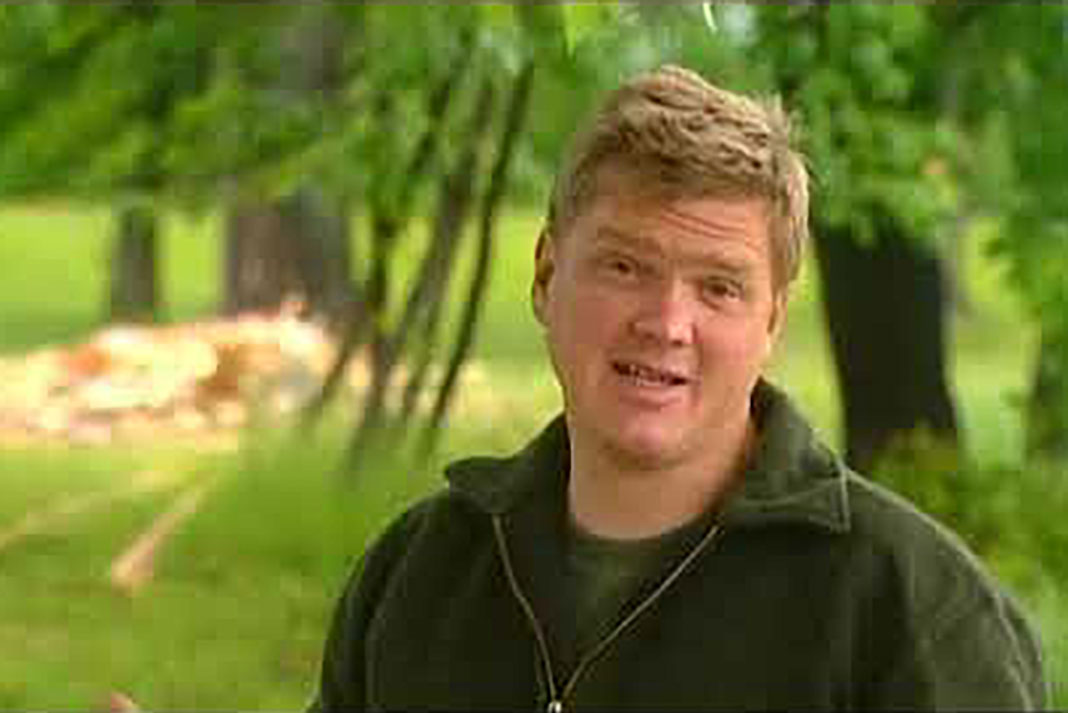
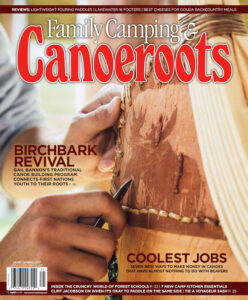 This article was first published in the Spring 2017 issue of Canoeroots Magazine.
This article was first published in the Spring 2017 issue of Canoeroots Magazine. 